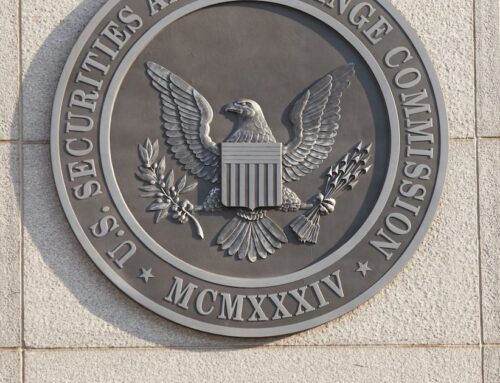3 piping hot Pizza Day facts for Bitcoin connoisseurs
May 16, 2025
This is a segment from the Supply Shock newsletter. To read full editions, subscribe.
Bitcoin Pizza season is back.
This Sunday will mark 15 years since early adopter Laszlo Hanyecz first posted his historic, cheesy request to Bitcointalk: Pizza for bitcoins?
Hanyecz boldly offered to pay 10,000 BTC to anyone who could deliver two large pizzas — two, “so I have some left over for the next day. I like having leftover pizza to nibble on later.”
Those coins were worth about $42 at the time and more than $2 billion today, enough to make your stomach grumble!
In many ways it was the most important transaction in Bitcoin’s history, even to this day. As Laszlo put it best: “Somebody had to start it off.”
Long-time subscribers to Supply Shock, from when it was called Bitcoin History, might remember our feature profile on Hanyecz from last year.
It does a fantastic job of plotting Hanyecz’s legacy, from early miner, to Satoshi collaborator, to Bitcoin Pizza Guy and beyond. Be sure to check it out in our archives.
This time around, let’s collect a few slices of the story that are sometimes left out.
In June 2010, about a month on from the original purchase, Laszlo posted: “This is an open offer by the way. I will trade 10,000 BTC for 2 of these pizzas any time as long as I have the funds (I usually have plenty). If anyone is interested please let me know.”
By August of that year, Laszlo cut the experiment short due to demand. The bitcoin hash rate had multiplied by more than 26 times since his initial offer, a monster jump attributed to pioneering pseudonymous miner ArtForz, who’d built their own GPU mining software and kept it private for a competitive edge.
“Well I didn’t expect this to be so popular but I can’t really afford to keep doing it since I can’t generate thousands of coins a day anymore. Thanks to everyone who bought me pizza already but I’m kind of holding off on doing any more of these for now.”
Laszlo would share in 2014 that he’d spent every coin he mined on pizza. His bitcoin address shows him receiving 81,432 BTC, presumably from his mining operations, with the same in outgoing transfers representing his pizza trades.
So, if what Laszlo says is true, that would mean he spent today’s equivalent of $8.45 billion on pizza.
If he’d held until today, Laszlo would only be $1.5 billion short of Michael Saylor on Forbes’ billionaires rich list. But he doesn’t seem to mind.
Jeremy “Jercos” Sturdivant was only 18 when he used his credit card to buy pizza for Laszlo from across state lines.
Jercos wasn’t an active poster on Bitcointalk and instead coordinated the deal with Laszlo via IRC, where the two had already crossed paths. It was on IRC that Studivant first learned of Bitcoin, and thought it interesting in light of the failure of e-gold around the same time.
He was even a bitcoin miner in his own right, “probably mining several thousand coins” by remotely running a cpuminer through Linode’s cloud computing service.
Studivant has shown similar grace as Laszlo when asked if they regret the experiment.
“Bitcoin as a currency is meant to be spent,” he said in an interview from 2015. “… Naturally there will always be people hoarding coins, trying to get rich, and quite a few people did get quite rich, but they wouldn’t have got that way without economic growth allowing it.”
At the time, Jercos appeared to still be sitting on quite a few coins, and was indeed using them as money.
“To that extent my bitcoin holdings do usually measure in hundreds or thousands of USD, simply because I use them much as I would a checking account, to conduct business both online and offline when I have the opportunity.”
“Notably the ‘humble bundles’ and the attached store accepting bitcoins significantly bolstered my video game library.”
The mainstream mostly knows Hanyecz as the Bitcoin Pizza Guy.
Around these parts, across the Rubicon, he’s also well-respected for porting Bitcoin Core to macOS in the space of a week, and being the first person ever to mine bitcoin with a GPU, even before ArtForz.
It could be that Satoshi had beaten Laszlo to the punch. In an interview from May 2020, Hanyecz said that Satoshi had already invented GPU mining as a sort-of-secret Death Star to protect Bitcoin from 51% attacks.
“And he actually shared with me his version of it,” Hanyecz said, after he’d shown his own GPU mining code to see what Satoshi thought. Satoshi then famously cautioned Hanyecz in private over potentially developing GPU miners too quickly.
“So even though it wasn’t in Bitcoin, he did have GPU mining code and he said he was just keeping it ready in case he had to defend the network with it.”
In late 2009 on Bitcointalk, Satoshi softly pushed for “a gentleman’s agreement to postpone the GPU arms race for as long as we can for the good of the network,” which looking back is quite interesting phrasing, considering they were already sitting on serious firepower.
The legacy of Laszlo and Jercos within the context of Bitcoin Pizza Day is largely ironic. Bitcoin is absolutely money, and anyone who swapped bitcoins for pizza with Laszlo or anyone else was absolutely reasonable to do so.
Money is for spending, just like Jercos said, and the term HODL would only be coined three and a half years after the first Bitcoin Pizza Day.
At the same time, bitcoins became so valuable so quickly that these days, actually spending them is instinctively viewed as tempting fate.
Nobody wants to accidentally spend billions of dollars on pizza. And that’s precisely why Laszlo will forever be a Bitcoin Legend.
Get the news in your inbox. Explore Blockworks newsletters:
- The Breakdown: Decoding crypto and the markets. Daily.
- Empire: Crypto news and analysis to start your day.
- Forward Guidance: The intersection of crypto, macro and policy.
- 0xResearch: Alpha directly in your inbox.
- Lightspeed: All things Solana.
- The Drop: Apps, games, memes and more.
- Supply Shock: Bitcoin, bitcoin, bitcoin.
Search
RECENT PRESS RELEASES
Related Post


